Landscapes of Liminality
Landscapes of Liminality
Between Space and Place
Edited by
Dara Downey, Ian Kinane, and Elizabeth Parker

London New York
Published by Rowman & Littlefield International, Ltd.
Unit A, Whitacre Mews, 26-34 Stannary Street, London SE11 4AB
www.rowmaninternational.com
Rowman & Littlefield International, Ltd. is an affiliate of Rowman & Littlefield
4501 Forbes Boulevard, Suite 200, Lanham, Maryland 20706, USA
With additional offices in Boulder, New York, Toronto (Canada), and Plymouth (UK)
www.rowman.com
Selection and editorial matter Dara Downey, Ian Kinane, and Elizabeth Parker 2016
Copyright in individual chapters is held by the respective chapter authors
Cover Art: Theres No Place Like Home, by Mary Notarthomas.
All rights reserved . No part of this book may be reproduced in any form or by any electronic or mechanical means, including information storage and retrieval systems, without written permission from the publisher, except by a reviewer who may quote passages in a review.
British Library Cataloguing in Publication Data
A catalogue record for this book is available from the British Library
ISBN: HB 978-1-78348-984-8
Library of Congress Cataloging-in-Publication Data Available
978-1-78348-984-8 (cloth : alk. paper)
978-1-78348-986-2 (electronic)
 The paper used in this publication meets the minimum requirements of American National Standard for Information SciencesPermanence of Paper for Printed Library Materials, ANSI/NISO Z39.48-1992.
The paper used in this publication meets the minimum requirements of American National Standard for Information SciencesPermanence of Paper for Printed Library Materials, ANSI/NISO Z39.48-1992.
Printed in the United States of America
DD: To Niall Gillespie
IK: To Brian and Noreen
EP: To Iris Harris
Contents
Robert T. Tally Jr
Dara Downey, Ian Kinane, and Elizabeth Parker
Annika Eisenberg
Bernice M. Murphy
Tracy Fahey
Kate Forrester
Kathryn Bird
Melanie Otto
Cristina Clopot
Noelle Mann
Mark Doyle
Katerina Kitsi-Mitakou
Robert T. Tally Jr
From the inescapably middling situation in which we find ourselves, the poet creates a map, giving form to the spaces and places of our experience, while the critic, also ensconced in the middle of things, endeavours to make sense of this literary cartography.
Landscapes of Liminality: Between Space and Place offers a novel, wide-ranging, multifaceted collection of perspectives on this fundamentally intermediary experience. The discourse of liminality itself is perhaps a symptom of the cartographic anxiety or spatial confusion characteristic of the present moment, whether it be associated with poststructuralism, postmodernity, globalisation, or some other conditioning condition. The spatial turn in the humanities and social sciences in recent years is one name for this polyvalent critical phenomenon. Not surprisingly, then, the rise in a discourse surrounding the liminal, that auspicious space or place of in-between-ness, appears to be thoroughly concomitant with the burgeoning of spatiality studies more generally. Landscapes of Liminality offers a timely intervention into multiple conversations regarding space and place in literature, cultural studies, and beyond.
As this volumes subtitle aptly registers, the concept of liminality lies somewhere between space and place. The two terms are distinct, but they are also inextricably interrelated, such that it is difficult, even undesirable, to speak of one without reference to the other. As Tuan explains,
Elsewhere, Tuan asserts that a place comes into being through this pause : As we look at a panoramic scene, our eyes pause at points of interest, thereby transforming these previously undifferentiated expanses of space into places, which in being identified as such take on meanings. Thus, they become subject to interpretation, the traditional zone for literary art and criticism. In establishing a place in this manner, one creates a text to be read as well as a topography to be mapped, and the contours of its form are largely arbitrary. Place relative to space thus requires the persistence of the limit, points, and lines demarcating the space in such a way as to form the boundaries of place.
Hence, the situation in-between or entre-deux requires some sense of boundaries, borders, or limits. In Latin, this was indicated by the term limes (plural, limites ), which could be used to designate any number of limits, but which also stood for the frontier or boundary of the Roman Empire itself. The limes represents an end, the outer boundary, or the mark of enclosure. However, what we think of as liminality is far from the closed space of a delimited territory, but is itself an in-between space of potentiality. In a ruse of etymology, one of those philological phantasms that trick the mind with false similitude or homophony, the limes does not necessarily share a root with the limen , the latter designating a threshold. To be sure, a boundary or border might become a threshold, but only when it is transgressed. The limen suggests a space more explicitly understood as a site of transgressivity, a point of entry into another zone. One could say that a political program of liminality, if there were any, would have to involve the transformation of the limes into a limen .
Here we might invoke Siegfried Kracauers idea of anteroom thinking, which he employs as a way of representing the historians
What does this imply for historians and other inveterate anteroom dwellers? asks Kracauer, before concluding:
Ambiguity is of the essence in this intermediary idea. A constant effort is needed on the part of those inhabiting it to meet the conflicting necessities with which they are faced at every turn of the road. They find themselves in a precarious situation which even invites them to gamble with absolutes, all kinds of quixotic ideas about universal truth. These peculiar preoccupations call forth specific attitudes, one of which appears to be particularly fitting because it breathes a true anteroom spirit.... It points to a Utopia of the in-betweena terra incognita in the hollows between the lands we know.
Only from this utopian perspective, perhaps, can one adequately limn the liminal, which must remain something of a terra incognita even as it is occupied and transgressed.
Liminality signifies a threshold between two zones, an anteroom distinct from that which could be said to be definitely inside or outside, here and there. The term ambiguity literally refers to both ways, and one who is located in the space of the liminal must be ever attuned to the presence of adverse or conflicting possibilities. Liminality also suggests a sort of neutrality , an aspect that confirms its connection with utopia, as Louis Marin made clear in Utopics: Spatial Play .governments and social orders, and utterly imaginary, inasmuch as it exists only in the fancy of the author and reader. Along similar lines, the neutral, deriving from the Latin ne and uter , literally expresses neither one nor the other, which for Marin opens up a utopian space distinct from the official zones designated real or imaginary. Neutrality should not be confused with disinterestedness, even less with objectivity. Here the neutral becomes another figure for the anteroom, the threshold, utopia, or the space that is neither the one nor the other, a site of perpetual ambiguity. Is it surprising that Dante punishes the neutral (those who refused to take sides in the wars between good and evil) not in Hell itself, but in a vestibule just outside the gates of Hell, the ante-Inferno ? Although it is hardly a utopian vision, Dantes creation of an ante-Inferno populated by the souls of the neutral, quite literally on the threshold of Hell, is indicative of the degree to which liminality itself can appear diabolical. However, from a perspective that is beyond good and evil, the liminal is suggestive of infinite possibilities.
Next page
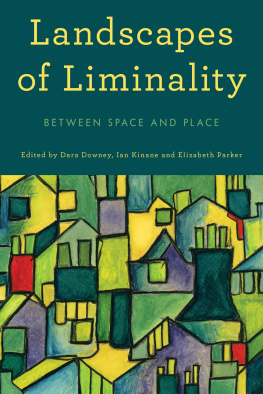

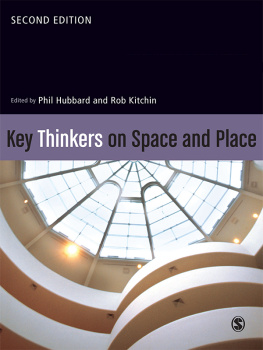

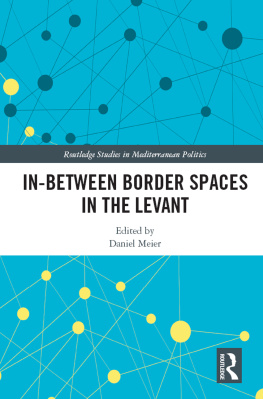
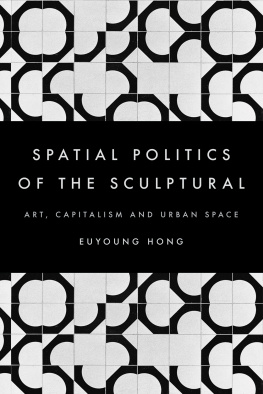
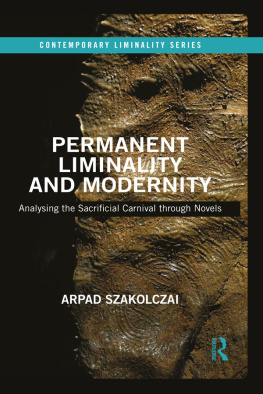
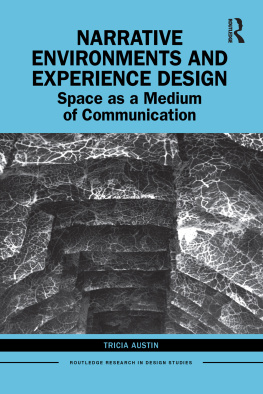
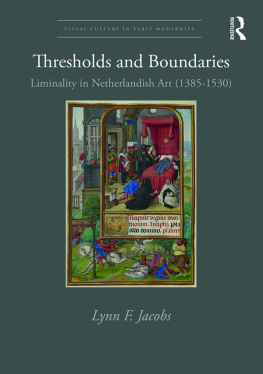
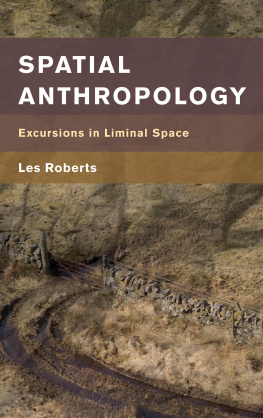
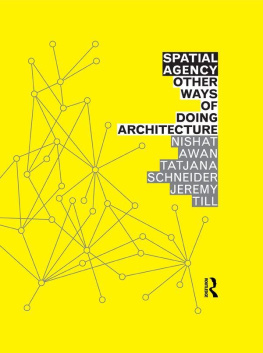

 The paper used in this publication meets the minimum requirements of American National Standard for Information SciencesPermanence of Paper for Printed Library Materials, ANSI/NISO Z39.48-1992.
The paper used in this publication meets the minimum requirements of American National Standard for Information SciencesPermanence of Paper for Printed Library Materials, ANSI/NISO Z39.48-1992.